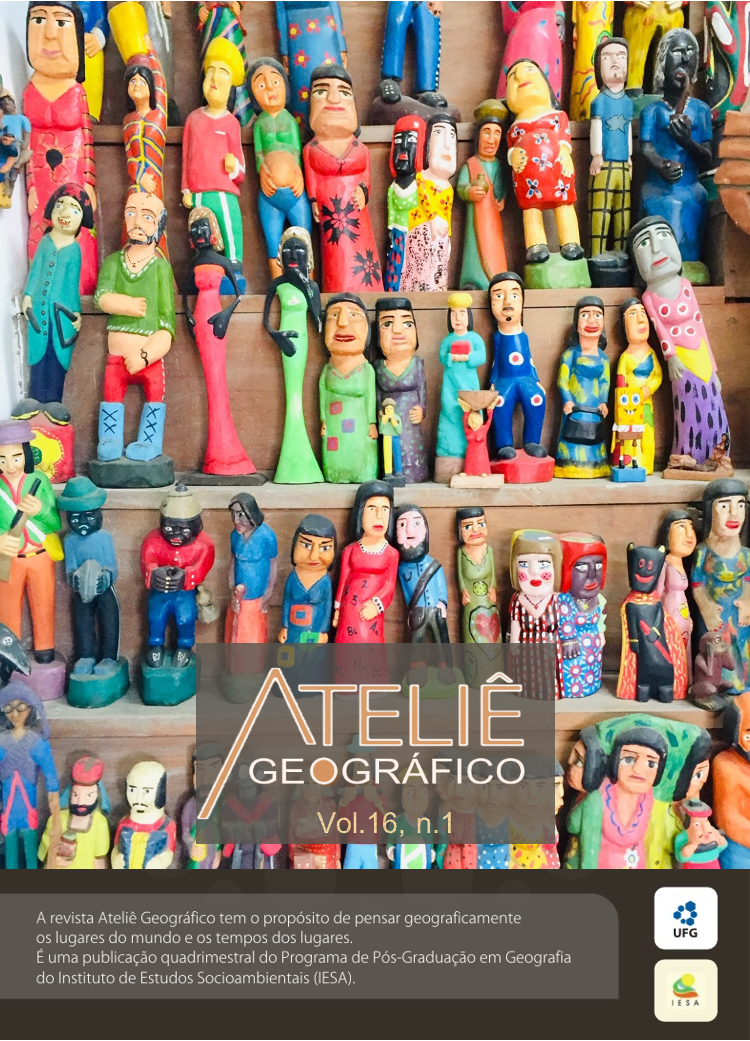The problem of urban mobility in Anápolis (GO) between 2011 and 2018
DOI:
https://doi.org/10.5216/ag.v16i1.72359Abstract
Urban mobility is currently presented as a challenge to managers of brazilian cities. The rapid growth and, in most cases, disorderly, causes diverse urban problems and disturbances to the population. Due to the problematic scenario of brazilian urban agglomerations, with reflexes on mobility, in 2012 Federal Law 12.587 was enacted, which established the guidelines for the National Policy on Urban Mobility (PNMA), in an attempt to mitigate the problems, establish rules and procedures concerning urban mobility. Based on this line of reasoning, the main objective of this article was to present the urban mobility policies implemented in Anápolis - GO, between 2011 and 2018, as they ended up influencing the implemented works and demanded great political and financial efforts, under pretext for improvements aimed at the population. The methodological procedures were based on bibliographic surveys, data collection, systematization and analysis in government agencies, fieldwork and mapping. The analysis shows that the implementation of public policies aimed at urban mobility has contradicted the guidelines established by the PNMU, since concepts aimed at dynamizing travel modes through public transport, bicycles and pedestrian locomotion were not applied, while that individual motorized transport was privileged. In addition, land use and occupation in Anápolis was developed over decades with a corporate bias and evident benefit to agents in the real estate market, expanding the problem of access to infrastructure, services, leisure and urban mobility.
Keywords: Urban mobility; Anápolis (Goiás, Brazil), urban space management
Downloads
Downloads
Published
How to Cite
Issue
Section
License
Autores que publicam nesta revista concordam com os seguintes termos:- Autores mantém os direitos autorais e concedem à revista o direito de primeira publicação, com o trabalho simultaneamente licenciado sob a Licença Creative Commons Attribution que permite o compartilhamento do trabalho com reconhecimento da autoria e publicação inicial nesta revista.
- Os autores não serão remunerados pela publicação de trabalhos na Revista Ateliê Geográfico. Além disso, os conteúdos publicados são de inteira e exclusiva responsabilidade de seus autores, ainda que reservado aos editores o direito de proceder a ajustes textuais e de adequação às normas da publicação.
- Autores têm permissão e são estimulados a divulgar seu trabalho online (ex.: em repositórios institucionais ou na sua página pessoal), já que isso pode gerar alterações produtivas, bem como aumentar o impacto e a citação do trabalho publicado (Veja O Efeito do Acesso Livre).


